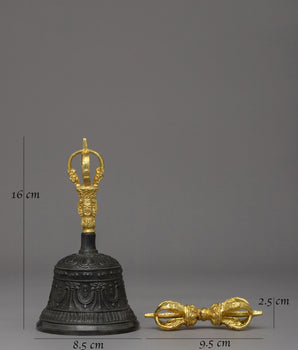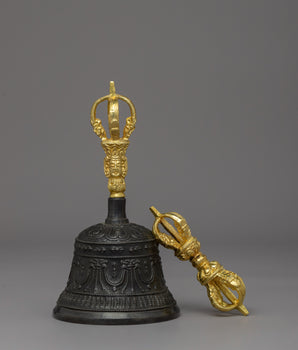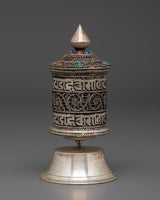
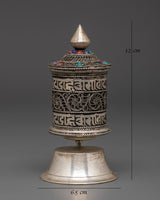
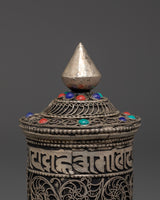

Sacred Prayer Wheel | Spiritual Ritual Tool

100% AUTHENTIC

HANDMADE

FREE SHIPPING
Brass Buddhist Sacred Prayer Wheel Decorated with Artificial Turquoise and Coral for Positive Energy
--------------------------------------------------------
Size: 12cm (Height) x 6.5cm (Width)
Weight: 0.12kg
Materials: Brass, Artificial Stone: Turquoise, Coral
--------------------------------------------------------
About our Prayer Wheel
Improve your spiritual practice with this Sacred Prayer Wheel, which is skillfully carved from brass and embellished with brilliant imitation turquoise and coral stones. This exquisite piece, 12cm tall and 6.5cm wide, incorporates ancient Tibetan inscriptions and symbols that exude tranquility and mindfulness. Its lightweight 0.12kg design makes it excellent for everyday usage during meditation, mantra recitation, or as a significant spiritual décor item for your altar or holy area.
This Tibetan Buddhist prayer wheel is an extremely effective instrument for spiritual change. When spun clockwise, it is said to energize and discharge positive energy, aligning the mind with loving goals via sacred chants such as Om Mani Padme Hum. The presence of artificial turquoise and coral indicates spiritual protection, vigor, and mental-physical harmony. Whether you're an experienced practitioner or just starting out with mindfulness and Buddhist rituals, this prayer wheel provides as a tactile reminder of spiritual attention and commitment. It also makes a lovely gift for people seeking serenity, inner clarity, or a profound relationship with Eastern spiritualit
Introduction to Prayer Wheel
A prayer wheel is cylindrical on a spindle and is used in Tibetan Buddhism. It is typically inscribed with the mantra "Om Mani Padme Hum" and rotated by hand as a form of spiritual practice and to accumulate merit. Spinning the wheel is believed to have the same spiritual benefits as verbally reciting the mantra. The use of prayer wheels is widespread in Tibetan Buddhism and has spread to other cultures.
How does the Buddhist Prayer Wheel benefit us?
The benefits associated with rotating the wheel are numerous. It promotes knowledge, compassion, and bodhicitta in the practitioner and improves siddhis (spiritual powers such as clairvoyance, precognition, etc.). The practitioner can repeat the mantra as often as possible while the wheel is rolling, maintaining a calm, meditative attitude. A Tibetan Buddhist tradition holds that after a practice session, one should dedicate any acquired merits to the benefit of all sentient beings. Then three times Om Ah Hum. This is usually among Tibetans after finishing any Buddhist practice, including the prayer wheel exercise.
How do you set up your own Buddhist Shrine?
• Find a clean, quiet, and uncluttered spot
• Set up an altar table and cover it with an altar cloth that calls to you
• Place your sacred item at the center













